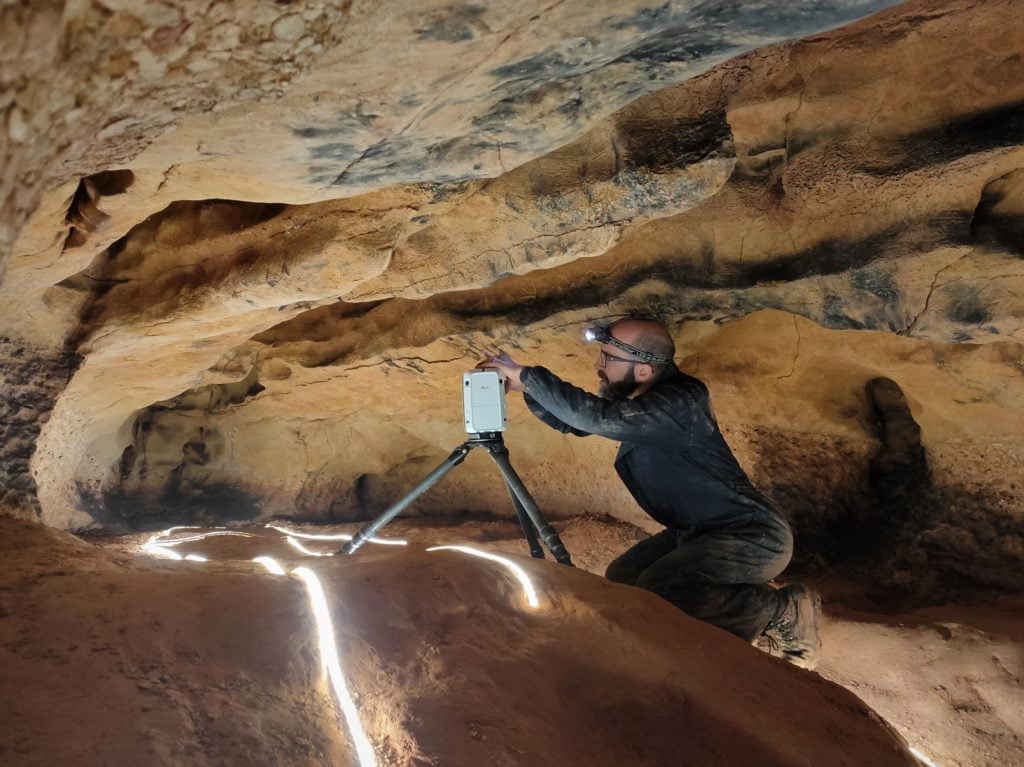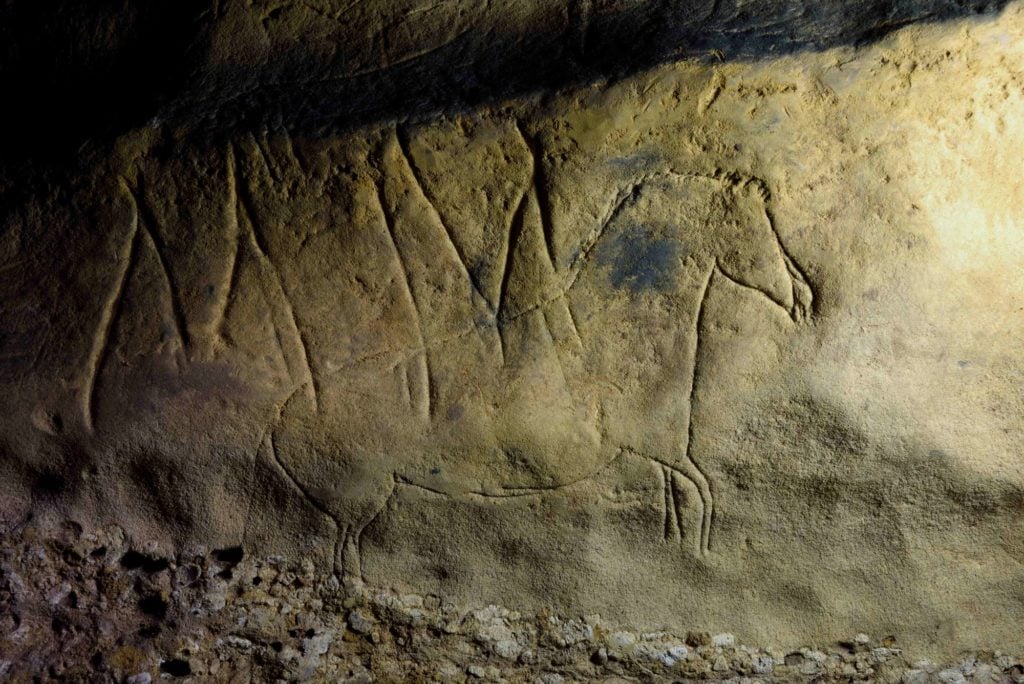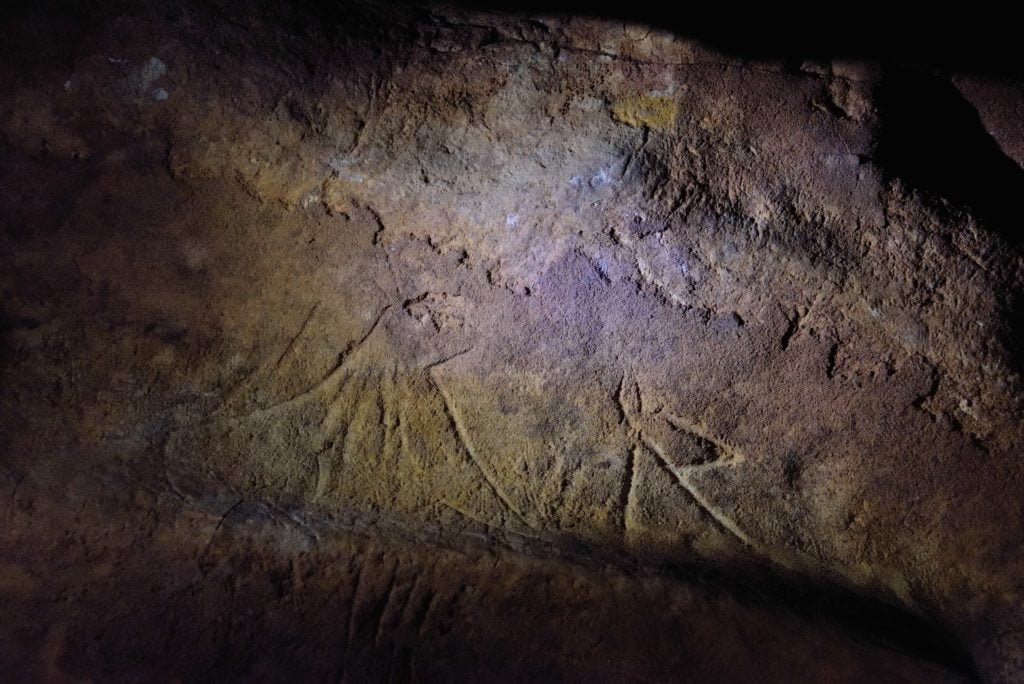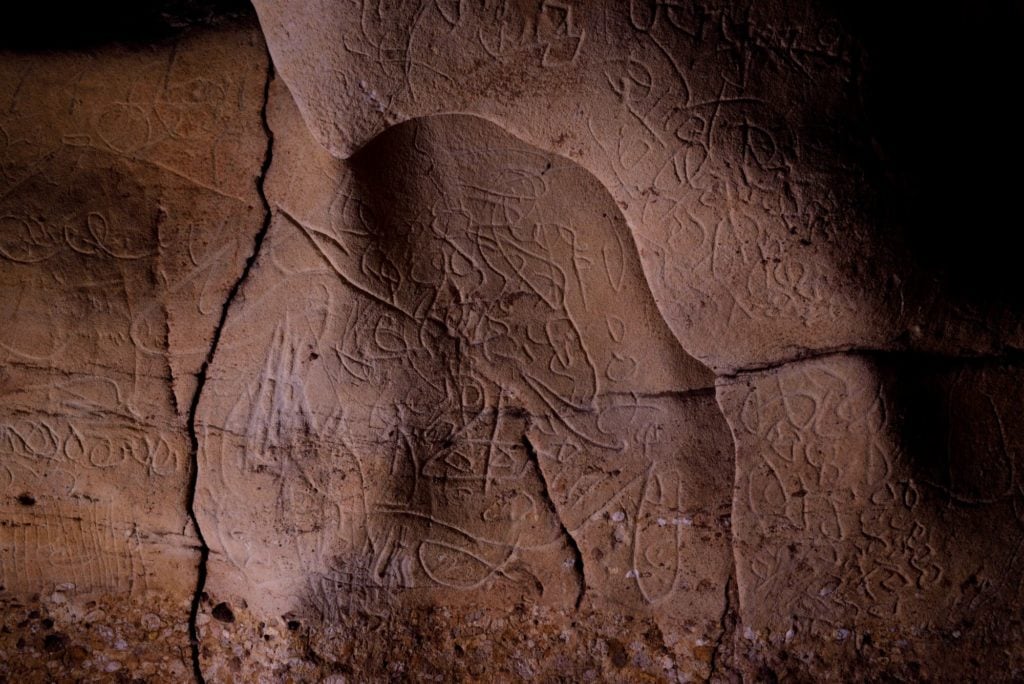Art World
Experts Discover a ‘Shrine’ of 15,000-Year-Old Animal Carvings and Mysterious Symbols in a Spanish Cave
The astounding carvings includes depictions of horses and bulls as well as mysterious abstract symbols.

The astounding carvings includes depictions of horses and bulls as well as mysterious abstract symbols.

Javier Pes

Experts have discovered a cave full of prehistoric carvings in northern Spain. Among the hundreds of rock carvings, some believed to be 15,000 years old, are vivid depictions of horses, deer, and bulls, as well as a wealth of mysterious and abstract symbols. Unlike the famous prehistoric paintings at Altamira, also in northern Spain, the recently discovered cave art in Catalonia is carved directly into the soft surface of the rock.
A team of archaeologists stumbled across the richly decorated cave at the end of October, although their discoveries have only just been announced. Josep Maria Vergès, who led the team from IPHES (the Catalan Institute of Human Palaeoecology and Social Evolution) described the find as “exceptional” in a statement, and compared the cave to a “shrine.”
The cave art is now being recorded and studied using 3D scanning technology. The engravings were created on a layer of soft sand deposited on the cave’s surface in an area that is difficult to access. The artworks are extremely fragile and can be damaged if touched; several figures seem to have been damaged in the past by visitors who were unaware of their existence. Experts are now studying the best way to preserve the remarkable finds.
Vergès tells Artnet News, that he felt a “mixture of surprise and disbelief, followed by great satisfaction,” when the he first saw the ancient works of art. “Surprise because the cave is not an ideal place to find engravings due to the characteristics of the rock, the walls were very irregular, and the specialists thought that it was not suitable for painting or engraving.” He says it seemed impossible that none of the thousands of people who have passed through the cave’s gallery in the past has ever spotted that “between and under the modern inscriptions there were tens of Paleolithic engravings.”

Cave art at Font Major. Photograph by Josep Maria Vergès, courtesy of IPHES.
The oldest art in the cave is believed to date back to the Late Stone Age, or Upper Paleolithic period. The earliest cave paintings at Altamira date from the same period, although they are around 20,000 years older.
Researchers uncovered the art within a nearly two-mile-long complex of caverns about 60 miles from Barcelona called the Cave of Font Major, which was first discovered in 1853. Parts of this cave complex, one of Europe’s largest, are open as a subterranean museum, although the specific stretch containing these carvings is closed to the public.
How does this new find stack up with other recent discoveries? It’s impressive, but not quite as ancient. Anthropologists working at Abri Blanchard in France’s Vézère Valley announced in 2017 the rediscovery of a 38,000-year-old rock engraving. It depicts an aurochs, or wild cow, and rows of dots. That ancient image is believed to be one of the earliest artworks found in Europe.

Abstract prehistoric carvings at Cave Font Major. Photograph by Josep Maria Vergès, courtesy of IPHES.

Abstract prehistoric carvings at Cave Font Major. Photograph by Josep Maria Vergès, courtesy of IPHES.